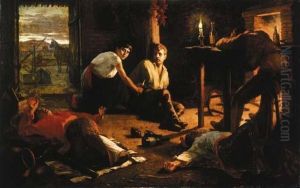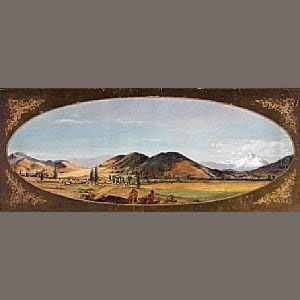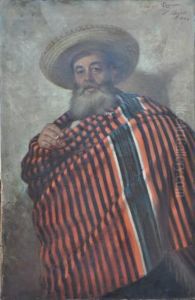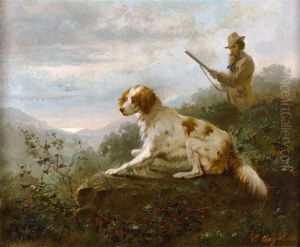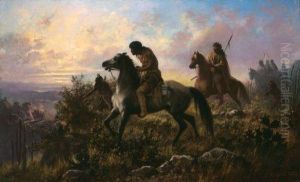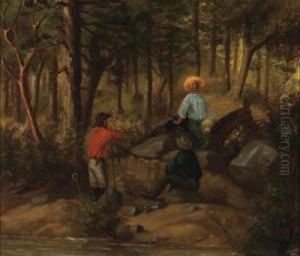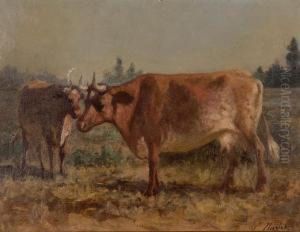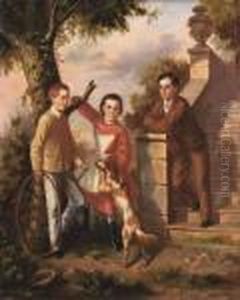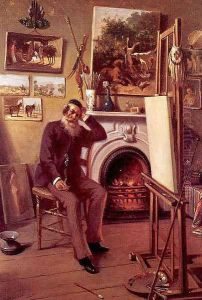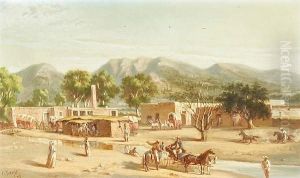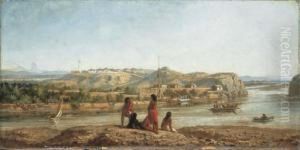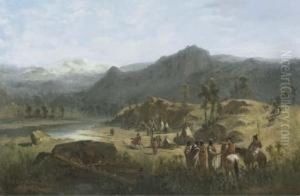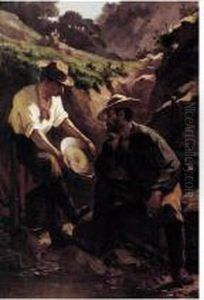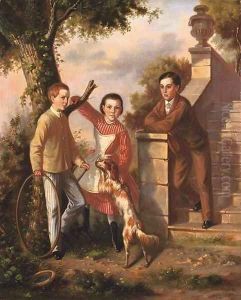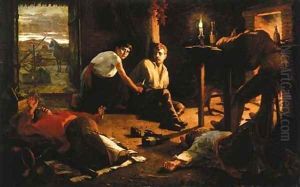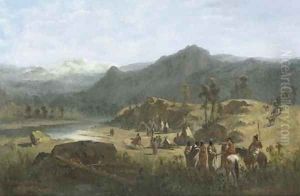Ernest Narjot Paintings
Ernest Narjot was a French-born artist who became a prominent figure in the California art scene after moving to the United States. Born in Saint-Malo, France, in 1826, he initially trained under his father, who was an artist and engraver, before pursuing formal art education in Paris. His early career was marked by his participation in the French artistic milieu, contributing works to various exhibitions and receiving recognition for his talent.
In 1849, drawn by the allure of the California Gold Rush, Narjot ventured to the United States, intending to find fortune. However, his career took a pivotal turn when he settled in San Francisco and began to focus on his art, rather than prospecting for gold. San Francisco during this period was a burgeoning hub for cultural and artistic activities, providing a fertile ground for Narjot's talents to flourish.
Narjot's work primarily consisted of paintings, though he was also skilled in other mediums. His subjects varied widely, including landscapes, portraits, historical scenes, and genre paintings, reflecting the diverse Californian environment and its people. His style was influenced by his French academic training, yet it also evolved to incorporate elements of the American aesthetic, particularly in his depictions of the Western landscape and scenes from daily life.
Throughout his career in California, Narjot became a key member of the local artistic community, contributing significantly to its development. He was involved in the founding of the San Francisco Art Association and participated in numerous exhibitions, both locally and internationally. His works were well-received, earning him accolades and recognition as one of the leading artists of his time in California.
Ernest Narjot's legacy is preserved through his contributions to the visual documentation of 19th-century American life, particularly in the West. His paintings are included in the collections of various museums and institutions, serving as a testament to his skill and his role in the cultural history of California. Narjot passed away in 1898, leaving behind a body of work that continues to be appreciated for its historical and artistic value.

